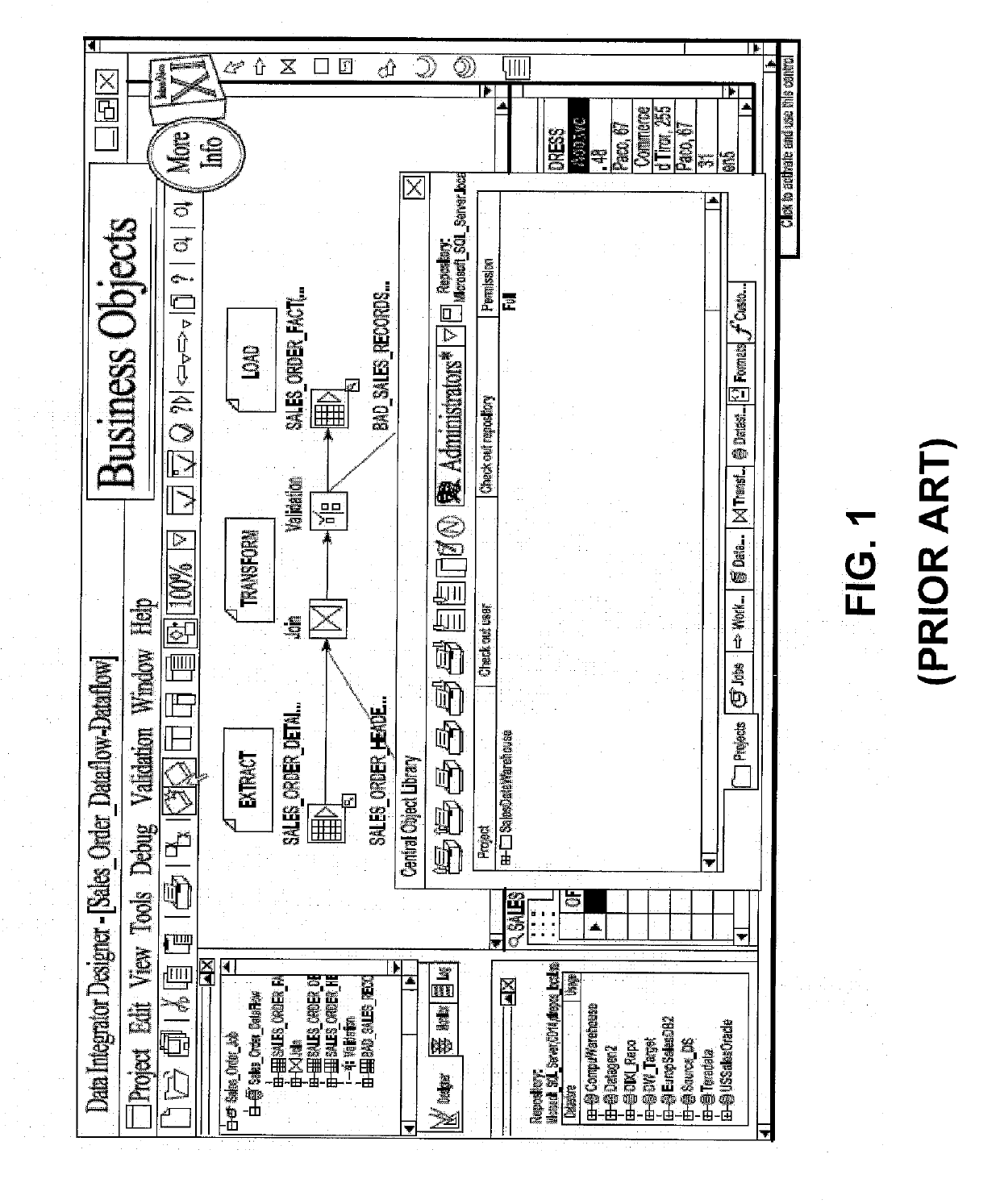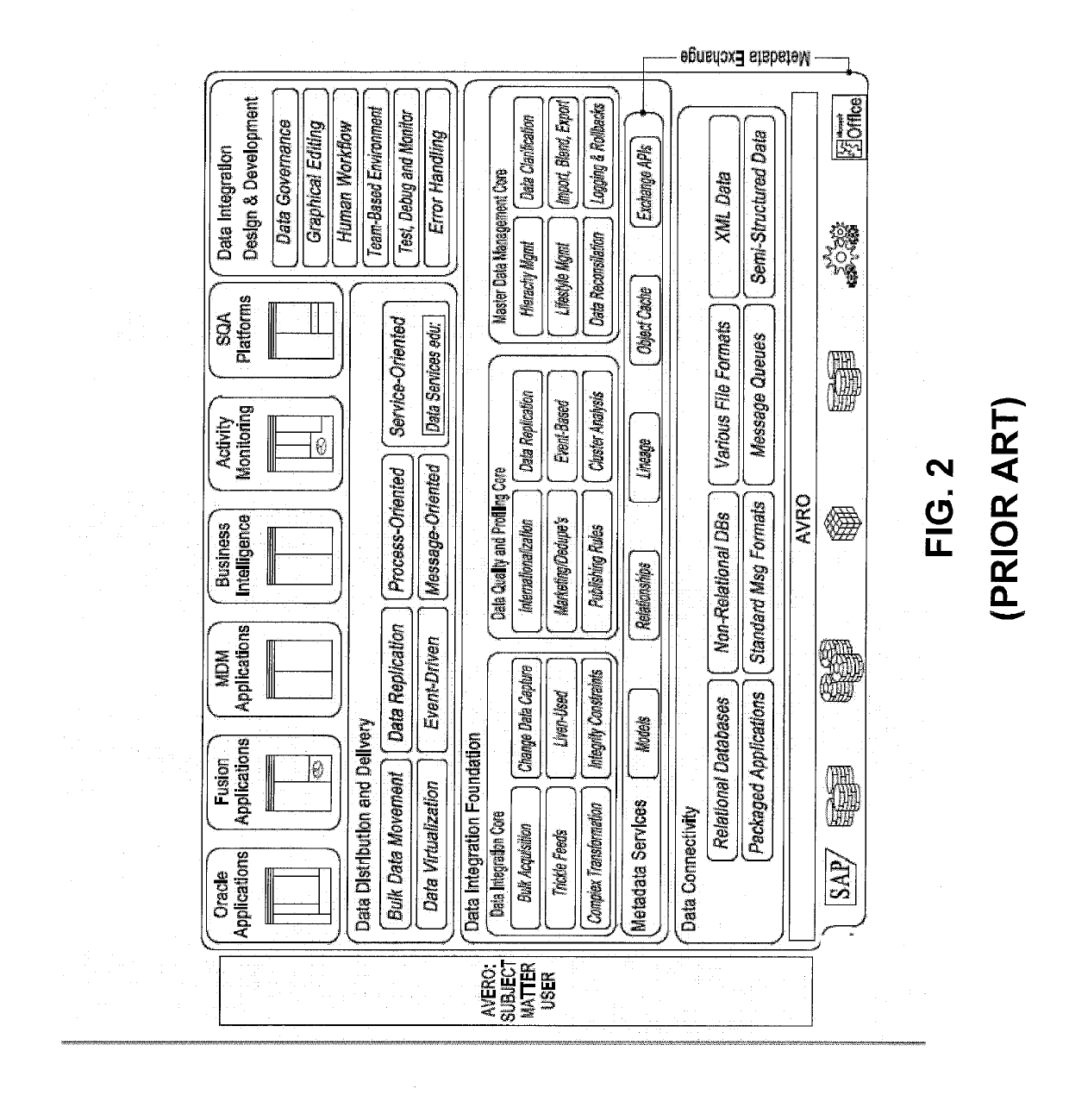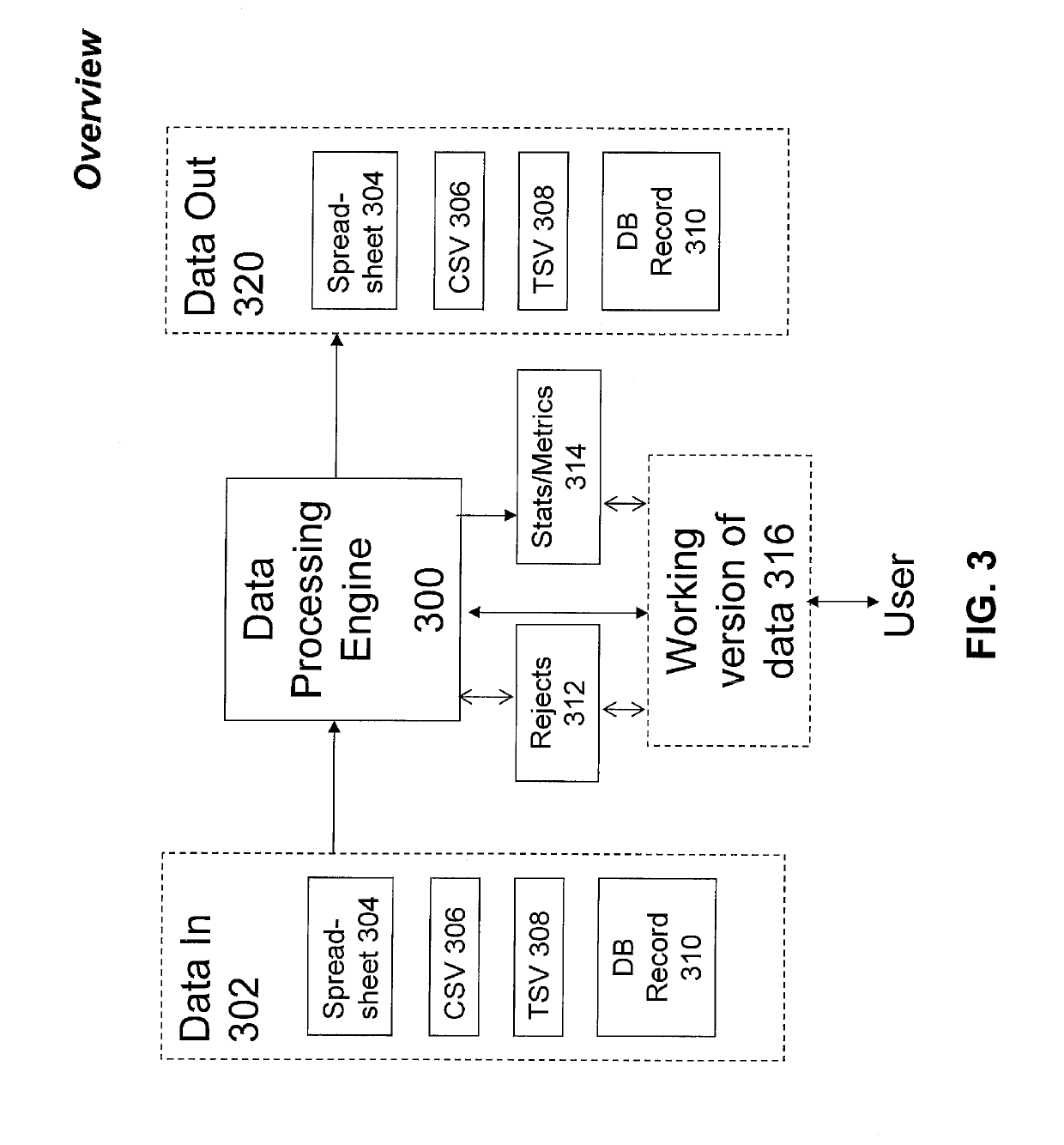The technical complexity of design, of modifying, supporting and using this base design has become more difficult and expensive.
In many conventional systems, the direct access by the end user of data sources, specifically files and
database is restricted or not permitted.
They do not enable the one off
processing of data by business users.
The time, expense and training is not cost justified in providing access to the users.
At the same time the level of complexity of application and data
software stacks has significantly increased due to the interface and integration of independent, incompatible software acquisitions into single platforms by the major software vendors, including: Microsoft,
Oracle, SAP, IBM, HP, etc.
The vendors are creating complex software stacks that are inflexible and inefficient application platforms
The data and application systems flexibility is being replaced by a
software vendor centric software stack that lacks design flexibility in the
application software, again reducing the capacity options for end users to leverage the data and software investments made by their companies or organizations
The result is the average end user—be they business or
subject matter expert—is becoming further removed from data sources and permitted
limited access via the vendor application stack.
The conventional process for providing the user with greater
data file and table access is with extended
technical training that is both expensive and infrequently available.
The result for IT and
data management systems and processes is there is a large amount of structured or key based data that is in an ungoverned status within the personal compute platforms and department level
server and
server storage.
The IT staff has neither the budget nor the
staffing to retrieve and manage these ungoverned sources.
These issues result in the options available to the user for their data process and management are primarily the use of
spreadsheet software such as Microsoft's EXCEL or simple data base software were the user controls the data and its management.
The complexity levels in software are increasing for companies and their users.
This is due to the number of levels of process and mid tier infrastructure, the large number of application choices, and the scope of a software systems implementation or version
upgrade is an expensive,
time consuming project process.
This complexity has opened a
Technology Gap between the software and the user
community of an organization in its skills, cost to access data sources and cost to maintain.
Complex systems increase in expense as they become more complicated and inflexible as the number of data, operations, and application
layers (stacks) and options increase.
Fourth, the large increase in the segments of applications being acquired by the major software vendors is creating software stacks and
interoperability challenges for companies to implement and manage on their compute platforms.
When multiple software segments combined with the number of acquisitions occur, the resulting software stack processes and management have become complex, expensive, and entail high
technical risk when moving to new versions of software.
This impacts the data structures and management
Fifth, the complexity increase of the software stack for a compute platform has also increased the complexity of the
data management tools.
The second level issue with the data software tools is their design point is a parameter base where individual elements can change between new release of software.
The growth in the user base, with the same base computer skills sets as described above, means the
data management complexity is increasing as well.
Their purpose is to make replacement by competing software firms more expensive and difficult.
Realities of data management and processes include the following problems:There is no single version of data truth.
Time latency prevents that from being achievable at an economic cost.The
skill sets of users remains static even when intelligent mobile appliances are considered.
There is a Gap between the user and the software stack resulting in less use of the data and less effective users in their jobs.Mobile appliances confirm that simple access to data and simple applications are a key technical productivity.Data ROI is with using the data not securing or managingNew application platforms have limited amounts of access to data in
Software as a Service (SaaS) working within the
Cloud Computing platform strategy.
The problem in the business and government environment is how to obtain cost effective Audit
Software designed for end users, auditors that supports integrated audit processes across a range of disparate vendor data and
application software.
The scope of data sources and software used to support those data sources, methods, and uses of data require complex, parameter based software and GUI's.
It is not being a simple or consistent design for any user to learn or utilize.
Even the introduction of intelligent mobile appliance applications has not modified this design.
Again the user is overwhelmed with function options complexity versus having an efficient set of process and methods for work with data sources with these applications.
Second, there is a limit of change of design aspects is due to the vendors and customers' significant financial investment,
staff training, the existing implemented processes and methods being supported.
The cost of transition is difficult to financially justify in upgrades or replacement of the current data and
application software.
This form of complexity prevents customers from changing their compute software platforms in what the industry defines as a “wide moat” retention strategy FIG. 2.
Third, it limits end
user participation beyond a very select basis due training cost, rate of
software changes and the lack of a sufficient Return on Investment of user access to direct or intermediate data sources.
There are many data and
information level components in current software options that further reduce user value due to the horizontal
connectivity between incompatible data found in
database software, data management processes and how data is permitted by a vendor to be moved between incompatible
record structures.
The number of software components now involved in an organization's data and application infrastructure prevents end users simple access to the data they require for their job responsibilities.
The user is further limited in what direct data sources can be accessed, even if the data structures are located in a
data store and forward schema with data marts and
data warehouse structures.
There are limited and technical complex methods to moving data between vendor data
record structures but not oriented to end user skills or
source data requirements.
The level of vertical and horizontal components and design complexity is further impacted by the issue of what is data and what is information.
The second issue in prior art approaches is the vendor complexity has created a vendor structured data
silo architecture where the application design is to control the data sources being utilized and making a
dissemination of data to other uses is very difficult.
However, on a
large scale data source basis, cross enterprise systems are inconsistent in achieving even a sub-component consistency.
And consideration of one off individual projects makes this form of data
record management unrealistic given limited budgets and IT resource availability.
And since there are few single vendor production environments the result of having multiple data management environments is the creation of multiple, incompatible
data structure silos.
However the reality is, no one truly knows the full extent of where users obtain or create their data sources, how they are used and what the level of
data security, back-up, archiving, etc. are performed; and is why this is defined as ungoverned data at the organization / enterprise.
What is known is this is a significant technical data management and processes issue.
Second, when
system change, the hardware and applications are replaced but the data is ported to the new systems.
 Login to View More
Login to View More  Login to View More
Login to View More 


